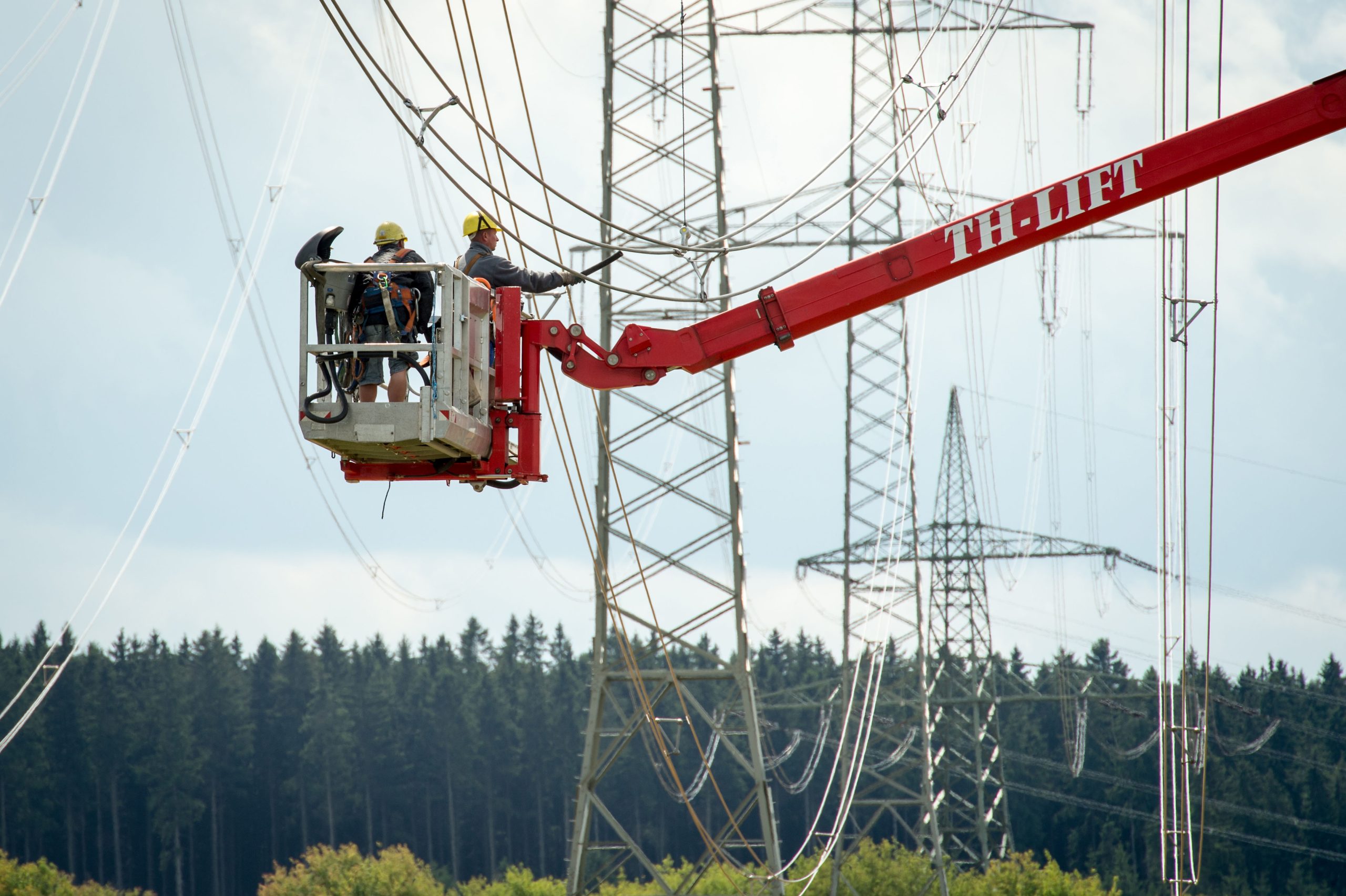
Green energy corridors for Central Asia and the Caucasus
COP29 host Azerbaijan and its neighbors are still largely fossil dependent, but regional collaboration around renewables could usher in a new era.
Highlights
Green energy corridors
A catalyst for the Caucasus & Central Asia’s energy transition
Central Asia and the Caucasus represent a diverse region with vast potential for green energy corridors to enable large-scale renewable energy development.
With the spotlight turning to Azerbaijan and its surrounding region as COP29 gets underway, one of the focuses would be ‘green energy corridors’, using interconnection and regional collaboration to enable renewables growth. Central Asia and the Caucasus are expected to lead these efforts, with Azerbaijan, the host of COP29, playing a pivotal role.
Central Asia can secure its energy future by prioritizing renewable energy, as current systems are struggling to keep up with rising electricity and gas demand. However, the region’s aging Soviet-era grid will require significant investment and a commitment to wider regional cooperation to support the necessary large-scale renewable integration.
Central Asia has already demonstrated its capacity for collaboration with GW-scale hydropower projects being developed between upstream and downstream countries. The region has much to gain from enhancing these efforts by tapping into the wind-rich north and sun-drenched south.
The planned green energy corridors connecting Kazakhstan, Uzbekistan, Azerbaijan, Türkiye, and the EU could bring together these diverse renewable sources, delivering low-cost, sustainable power across borders.
Fossil fuel reliance in Central Asia and the Caucasus
Central Asia and the Caucasus remain heavily reliant on fossil fuels. Limited regional connection and lack of energy diversification have produced regional challenges in meeting rising electricity demand, creating a major opportunity for green energy corridors.
Fossil fuel dependence varies across countries. Gas accounts for over half of the region’s total power generation, with Turkmenistan (99%), Uzbekistan (94%) and Azerbaijan (89%) generating most of their electricity from gas. Coal, on the other hand, plays a major role primarily in Kazakhstan, where it meets 57% of electricity demand, while gas contributes 29%. Hydropower is the only significant renewable source in the region, supplying between 76% and 88% of electricity in Tajikistan, Kyrgyzstan, and Georgia.
As a result, the power sector in Central Asia and the South Caucasus produces emissions (239 million tonnes of CO2 per year) that are 62% higher than Türkiye’s, a coal-dependent G20 country, even though Türkiye has 8% higher electricity demand.
Limited connectivity and challenges to ensuring a secure supply
While there is some regional connection to manage power supply and demand, it is not extensive enough to provide the cost and security benefits of a diversified renewable mix. The power grids of Uzbekistan, Kyrgyzstan and southern Kazakhstan operate in parallel as part of the Unified Energy System of Central Asia, but the system is not self-sufficient to meet their power demand. Turkmenistan supplies electricity to Uzbekistan’s grid with its standalone gas-fired power plants. Currently, the only interconnection project under construction in the region is between Kyrgyzstan and Tajikistan.
Hydro-reliant Kyrgyzstan imports from Turkmenistan when its own hydro generation is not sufficient to meet peak winter demand. Another gas-rich country Uzbekistan is also only able to meet winter demand by importing from gas-fired power plants of Turkmenistan.
Despite its fossil fuel reserves, the region faces power cuts and disruptions to residential heating during cold spells. Kazakhstan, once a net gas exporter, struggles to maintain a gas surplus due to rapidly increasing domestic demand. Meanwhile, Uzbekistan’s gas production is entering a phase of terminal decline with limited potential for major new discoveries, turning the country into a gas importer.
Rising power demand across Central Asia presents an increasing challenge to regional energy security. However, the region’s abundant renewable energy potential offers a route to address these challenges and build a more sustainable and secure energy future.
Vast renewable energy potential
Central Asia and the Caucasus benefit from a diversity in geography that provides a complementary profile of renewables – strong wind potential in the north, solar in the south and hydro in the east around the region’s two largest rivers. Sharing renewable electricity across the region via interconnectors would help balance supply and demand across different times and conditions to ensure a cheap, reliable supply of electricity.
Kazakhstan, with its vast land area, has the highest onshore wind potential in the region, capable of generating an estimated 929 TWh annually – equivalent to three times the region’s power demand. Plans by Chinese companies to manufacture wind turbines in Kazakhstan can address logistical challenges of transporting large turbine components, while creating new jobs locally.
The region additionally has significant potential for offshore wind development. According to the World Bank, the Caspian Sea holds an estimated 845 GW of offshore wind potential. Of that, a substantial 509 GW is located in shallow waters, making it more cost-effective to develop. Azerbaijan’s Offshore Wind Development Program estimates that 7.2 GW of offshore wind capacity could be realistically developed by 2040 under a decarbonization scenario, supported by interconnections with neighboring markets such as Türkiye and the EU.
In terms of solar, the southern part of the region is particularly promising. Turkmenistan and Uzbekistan enjoy solar potential comparable to Türkiye’s sun-rich southern areas. Turkmenistan’s solar potential is estimated to be 655 GW, equivalent to eight times of the region’s current total installed capacity. Even Azerbaijan, a relatively smaller country with moderate solar resources, is estimated to have up to 23 GW of solar potential according to its Ministry of Energy.
Hydropower potential in the region remains largely untapped. Even Tajikistan and Kyrgyzstan, which rely heavily on hydropower, still have vast undeveloped resources. Studies estimate Tajikistan’s economically viable hydropower potential at 264 TWh and Kyrgyzstan’s at 55 TWh. Kazakhstan also has 62 TWh of technical hydropower potential. Though hydro is slower to deploy than solar and wind, the region may benefit from expanding hydro in parallel, while mitigating potential social and environmental risks.
The region is rich in renewable energy resources, with various clean energy sources concentrated in different areas. Improved connectivity will enable the region to capitalise on this diverse renewable potential. Therefore proposed green energy corridors linking Azerbaijan-Georgia-Romania, Uzbekistan-Kazakhstan-Azerbaijan, and Azerbaijan-Türkiye are set to play a pivotal role in advancing the regional energy transition. On the other hand, commitment to energy transition is uneven across the region.
Renewable energy ambitions vary in the region
Kazakhstan, despite its reliance on coal, is the first country in the region to set a net-zero target in law and establish an emissions trading system. Thanks to recent installations, wind and solar power accounted for nearly 5% of Kazakhstan’s electricity generation in 2023. The Kazakh government aims to increase the renewable share in generation (excluding large hydropower) to 15% by 2030.
Uzbekistan is planning a rapid increase in renewables and storage, despite its current reliance on fossil fuels. As of 2022 Uzbekistan had around 18 GW total installed capacity with fossil fuels making up the majority. The country generated over 90% of its electricity from fossil fuels in 2022 with minimal wind and solar contributions. However, it has since brought 2.5 GW of new wind and solar plants online. In early 2024, the Uzbek government raised its renewable energy target from 25% to 40% of the electricity mix by 2030. It also doubled its wind and solar capacity goal from 12 GW to 27 GW. Uzbekistan now also leads the region in energy storage, having secured financing for 63 MW, 500 MWh and 668 MW battery projects coupled with grid-scale solar power plants.
Azerbaijan aims to reach 30% renewables in installed capacity by 2030, up from 20% in 2023. Currently, 1.5 GW of wind and solar projects are at financial closure or groundbreaking stages, marking solid progress toward this target as the country’s current total installed capacity stands at 8.3 GW.
On the other hand, Turkmenistan has yet to establish renewable energy targets, despite generating almost no power from renewable sources.
COP29 could usher in a new era
New interconnectors have the potential to link Europe’s grid with Central Asia, though substantial investments will be required. Kazakhstan, for instance, must strengthen connections between its northern and southern zones, while also linking its western zone to the rest of the country. A direct connection between Kazakhstan and Azerbaijan would necessitate an undersea cable across the Caspian Sea, while another submarine cable in the Black Sea is planned to connect Romania and Georgia. Alternatively, Türkiye, already integrated with the European grid, could provide a land-based link between Europe and the Caucasus, though its connection with Azerbaijan would need to be enhanced.
In any scenario, Azerbaijan will play a central role in connecting Central Asia and Europe. By raising its renewable energy ambitions, the COP29 host could position itself as a regional green energy hub, bridging Central Asia and Europe and fostering stronger collaboration on clean energy transitions across neighboring countries.
There are several compelling reasons for regions to pursue this, including promoting a more stable energy supply by enabling access to regions with abundant renewable resources, diversifying supply sources and utilizing the complementary nature of different renewables. According to the IEA’s projections, without international cooperation the global transition to net zero could be delayed by decades. In other words, cooperation leads to a faster transition.
Wind and solar power are now the cheapest power generation sources in the world. Global onshore wind power installation costs are 70% lower than in 2010, while solar power is 90% cheaper than in 2010. Clean technology prices are forecast to continue falling, but the IEA estimates that they will fall faster in the context of a global transition enabled through collective actions. Collaboration between countries can drive innovation, create stronger incentives for investment, achieve larger economies of scale and foster fair competition that supports the transition.
In this context, the development of green energy corridors across Central Asia, the Caucasus, and Europe represents a great opportunity to unlock the renewable energy potential, enhance energy security, and reduce reliance on fossil fuels in the most cost effective way. As COP29 draws attention to the region, the commitment and cooperation among nations will be key to turning this vision into reality, advancing toward a shared goal of creating a cleaner, more connected and affordable future for all.
Supporting materials
Acknowledgements
Cover photo
Power lines in Azerbaijan.
Credit: Denis Svechnikov / Alamy Stock Photo
Contributors
We would like to thank Chelsea Bruce-Lockhart and Lauren Orso for data visualizations, Hannah Broadbent and Alison Candlin for their contributions to the text, Oya Zaimoğlu for data validation, and Richard Black, Sarah Brown and Dave Jones for reviewing the text.
Related Content




